Anston is a civil parish in South Yorkshire, England, formally known as North and South Anston. The parish of Anston consists of the settlements of North Anston and South Anston, divided by the Anston Brook.
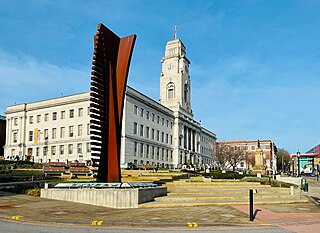
Barnsley is a market town in South Yorkshire, England. It is the main settlement of the Metropolitan Borough of Barnsley and the fourth largest settlement in South Yorkshire. The town's population was 96,888 in 2021, while the wider borough had a population of 244,600 in the 2021 census.
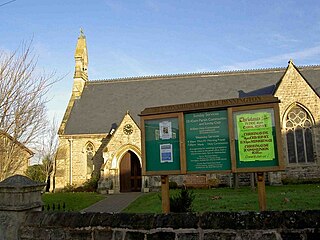
Dinnington is a town in the civil parish of Dinnington St John's, in the Metropolitan Borough of Rotherham, in South Yorkshire, England. It is near to the towns of Worksop and Rotherham and cities of Sheffield and Doncaster.

The Blue Coat School is a co education Church of England academy for 11- to 18-year-olds, located in the town of Oldham, Greater Manchester, England.

Maltby is a former mining town and civil parish in the Metropolitan Borough of Rotherham, South Yorkshire, England. It was historically in the West Riding of Yorkshire. It is located 6 miles (10 km) east of Rotherham and 10 miles (16 km) north-east of Sheffield. It forms a continuous urban area with Hellaby, separated from the rest of Rotherham by the M18 motorway. It had a population of 16,688 at the 2011 Census.

Mexborough is a town in the City of Doncaster in South Yorkshire, England. Situated between Manvers and Denaby Main, it lies on the River Don close to where it joins the River Dearne, and the A6023 road runs through the town. It is contiguous with the town of Swinton which is directly to the southwest immediately across the railway and Conisbrough to the east.
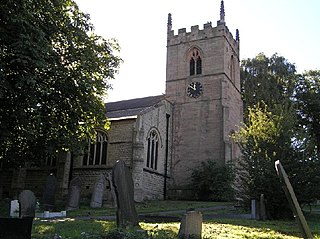
Killamarsh is a village and civil parish in North East Derbyshire, England, bordering Rotherham to the north and Sheffield to the north-west.

Wath upon Dearne is a town south of the River Dearne in the Metropolitan Borough of Rotherham, South Yorkshire, England, 5 miles (8 km) north of Rotherham and almost midway between Barnsley and Doncaster. It had a population of 11,816 at the 2011 census. It is twinned with Saint-Jean-de-Bournay in France.

Swinton is a town in the Metropolitan Borough of Rotherham, in South Yorkshire, England on the west bank of the River Don. It has a population of 15,559 (2011). The town is five miles north-northeast of the larger town of Rotherham and directly west-southwest of Mexborough. The original junior and infant school building built in 1852 on Church Street still exists, and is being converted into residential apartments called Fitzwilliam Lodge.

High Storrs School is a mixed secondary school and sixth form college with academy status located on the south-western outskirts of Sheffield, England. The main school building is Grade II listed. It moved to its current site in 1933. The school does not have a set uniform, instead allowing students to wear what they like as long as it follows the dress code.
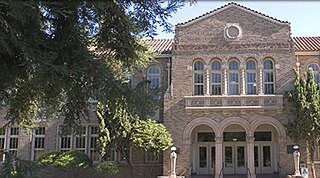
Turlock High School (THS) is a comprehensive high school located in Turlock, in the heart of the northern San Joaquin Valley in the U.S. state of California.
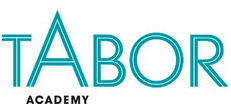
Tabor Academy is a Secondary school with Academy status located in Braintree, Essex, England.

Trafalgar School is a coeducational secondary school located in Portsmouth, Hampshire, England. The school is on London Road in the Portsmouth northern sub district of Hilsea. The current comprehensive school, established in 1975, was the product of an amalgamation of four separate secondary schools in the west of the City of Portsmouth. Formerly a boys' school, the school became coeducational in September 2015.

The Anderson High School (AHS) is a comprehensive secondary school in Lerwick, Shetland, Scotland. The AHS is the largest school in Shetland with around 67 staff and about 800-900 pupils from age 12 to 18.
Turnbull High School is a co-educational comprehensive secondary school located in Bishopbriggs, East Dunbartonshire, Scotland. The school was named after William Turnbull, Bishop of Glasgow from 1448 to 1454, and founder of the University of Glasgow in 1451, of which he was the first Chancellor. Whilst enrollment is open to pupils of all religious denominations and none, the School's religious ethos emphasises practice of Roman Catholic moral values both in the church and in the community, with its own Chaplain and many associated charitable and community-based activities undertaken.
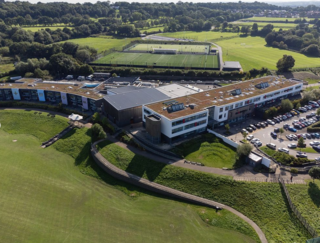
Newfield Secondary School is a coeducational secondary school with academy status for 11–16-year-old children, situated in the south of the city of Sheffield, South Yorkshire, England, specifically in the Norton Lees area. It is co-located with Talbot Specialist School with which it has some collaborative arrangements. There are approximately just over 1000 students at the school. The current headteacher is Mrs E Anderson, who was originally appointed the post as co-headteacher with Mr D Webster, who later went on to be headteacher at Mercia School. in October 2015. In 2013 the school was sponsored to become an academy as part of its ongoing partnership with King Ecgbert School in Sheffield, with Lesley Bowes assuming the role of executive headteacher.

Rotherham College is a further education college in Rotherham, South Yorkshire, England. It was established as Rotherham School of Science and Art in the 19th century.
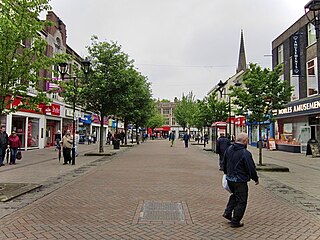
Rotherham is a market town in South Yorkshire, England. It is the largest settlement in the Metropolitan Borough of Rotherham. Rotherham is on the banks of both the Rivers Don and Rother, the latter of which the towns name originates.

Maltby Academy is an academy school in the former mining town of Maltby in South Yorkshire, England.
Dinnington St. John's is a civil parish in the Metropolitan Borough of Rotherham, South Yorkshire, England. The parish contains nine listed buildings that are recorded in the National Heritage List for England. Of these, one is listed at Grade I, the highest of the three grades, one is at Grade II*, the middle grade, and the others are at Grade II, the lowest grade. The parish contains the town of Dinnington, the hamlet of Throapham, and the surrounding countryside. Most of the listed buildings are houses and associated structures, and the others are a church, and the remains of a medieval cross.

































